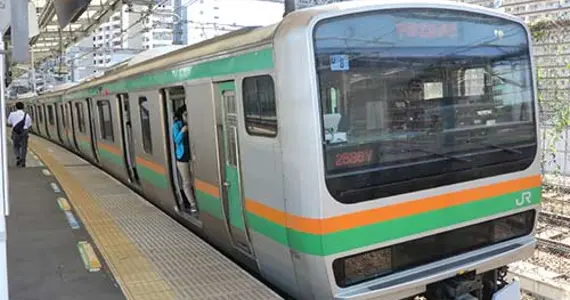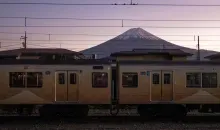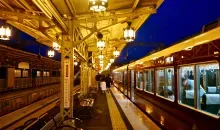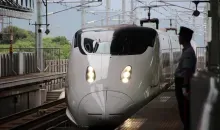Getting Around Tokyo
Tokyo has a very practical transportation system and is home to some of Japan’s busiest train stations such as Tokyo station and Shinjuku stations.
Our travel tips to travel in and around Tokyo
Travelling by rail is the primary way of transportation in greater Tokyo and the railway transport network includes both public and private networks.
The Yamanote Line and the Chuo Line are covered with the Japan Rail Pass, but sometimes it may be more convenient to take the Metro. For that, you can use IC Cards like Suica and PASMO.
There are also plenty of day trips possible from Tokyo, you can find here some ideas of itineraries to travel around the capital.
Major train stations in Tokyo
The aforementioned public and private train networks in Tokyo have their cornerstones set in the many large-scale train stations throughout the greater metropolitan area. As opposed to train stations in many other countries, Japan's, and especially Tokyo's, train stations operate as multi-level, multi-purpose complexes with a great number of train lines being serviced.
Tokyo Station
The namesake station for the city has an aesthetic all its own and is central to Tokyo with upscale surroundings. A stop on the JR Yamanote Line, Keihin-Tohoku Line, and other JR lines. The Tokyo Metro Line is also serviced at this station via the Marunouchi Line. Tokyo Station is the terminal station for a number of Shinkansen Lines that go out to other parts of the country. The worlds first bullet train line, the Tokaido-Sanyo Line, goes out to Kansai destinations like Kyoto and Osaka with the chance to stop at Odawara in Hakone along the way. This route also leads travelers to Nagoya in Aichi Prefecture, and from Nagoya Station, a transfer can be made to the Hida Limited Express to go to Takayama in Gifu Prefecture. The Hida Limited Express extends across the island of Honshu out to Toyama in Hokuriku.
From Kansai, the Tokaido-Sanyo Shinkansen Line goes out to Hiroshima and then Kyushu, ending at Hakata Station in Fukuoka. The Hokuriku Shinansen crosses the island of Honshu out to the Japan Sea Coast, with destinations like Nagano, Kanazawa, and Tsuruga being stops. The Tohoku Shinkansen travels north to the region of the same name, eventually ending up north at Hakodate in Hokkaido.
Shinjuku Station
Shinjuku Station alone sees upwards of 3.5 million people commute through it on a daily basis, and from this station, the Odakyu Line can be taken out to west to other parts of the city, all the way out to Hakone in Kanagawa. The Chuo Main Line also goes out west, and can even be used to go out to Otsuki in Yamanashi Prefecture. Of course, JR has a medley of lines leaving from Shinjuku station, including the iconic Yamanote Line, Chuo Line, Saikyo Line, and more. Other train services include the Tokyo Metro with the Marunouchi Line, Toei Shinjuku Line, Fukutoshin Line, and Oedo Line.
Shibuya Station
One of the most iconic stations in all of Japan, Shibuya serves as a major central hub of transportation in Tokyo. Also a stop on many JR Lines, including the Yamanote Line, Saikyo Line, and Shonan-Shinjuku Line. The private Keio-Inokashira Line, Den-En Toshi Line, and Toyoko Line also take passengers around the city, including its more calm and residential zones. Subway lines include the Ginza Line, Hanzomon Line, and Fukutoshin Line.










